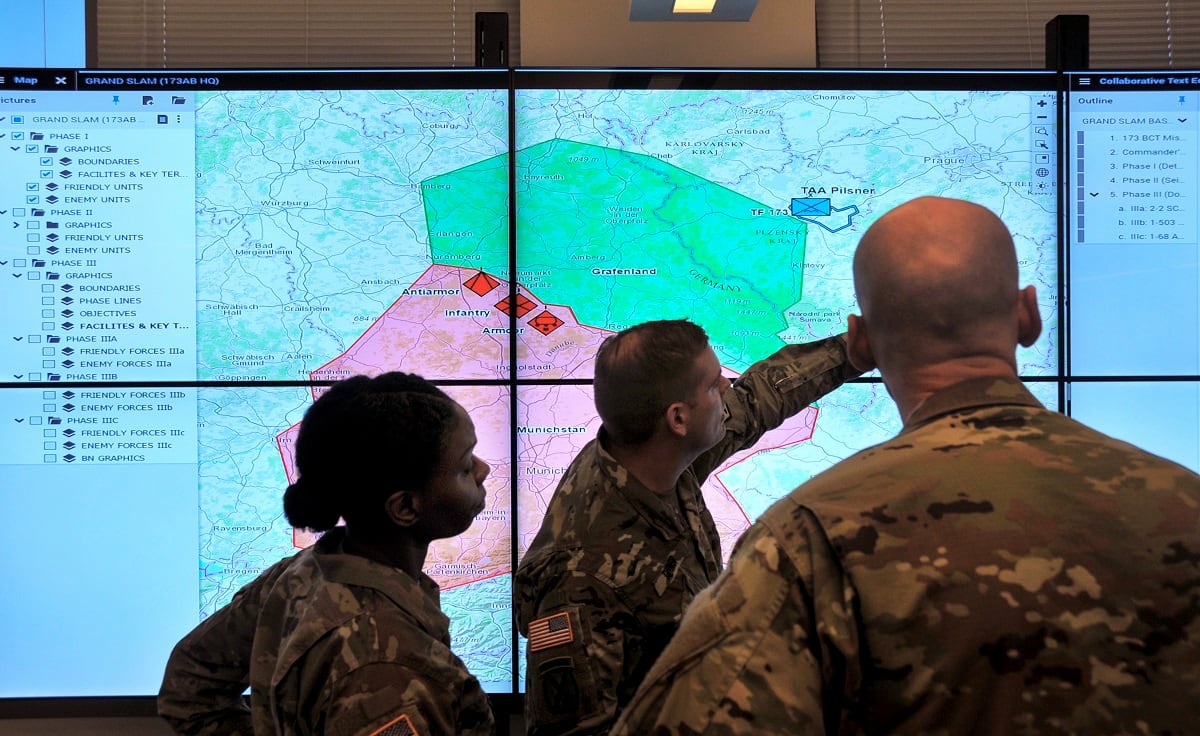A Senate panel has recommended cutting nearly $46 million in next year’s budget from a highly anticipated Army tool that would improve situational awareness on the battlefield.
If approved, such a move would likely limit the number of servers the Army will be able to buy to support the Command Post Computing Environment (CPCE). As a result, it would also limit the number of units that would receive the system next year.
The Army had requested $77.5 million in the fiscal year 2020 budget as part of the Common Operating Environment Tactical Service Infrastructure budget line, but sources confirmed to C4ISRNET Sept. 12 that the Senate Appropriations committee suggested just $31.6 million for the program. The committee’s markup of the bill is not yet publicly available, but members noted in their version of the legislation they were making the cut as part of “restoring acquisition accountability.”
CPCE aims to consolidate disparate command post tools and to help Army leaders react faster than the enemy. The Army’s Command Post Computing Environment is a web-enabled system that will consolidate current mission systems and programs into a single user interface. This includes programs such as the Tactical Ground Reporting System (TIGR), Global Command and Control System-Army (GCCS-A), Command Web and Command Post of the Future (CPOF).
According to Army budget documents, the $77 million in procurement dollars would go toward buying 205 large servers and 550 small servers that will host the CPCE core infrastructure software and applications.
While CPCE is already in use to some degree, the Army is still testing the system. However, CPCE was slated to be formally included as part of the first delivery of the Army’s modernized network kit to four infantry brigades under what’s known as capability set 2021. Army officials have said portions of the 82nd Airborne Division, 1st Cavalry Division, 101st Airborne Division and 25th Infantry Division were slated to receive the technology in 2020.
Commanders, who have used the early versions of the program, have lauded the capabilities.
“We’ve definitely created more shared understanding. Because of the collaboration, because it’s more intuitive, because it’s web-enabled I can do things quicker with my subordinate units,” Col. Arthur Sellers, commander of the 3rd Brigade, 82nd Airborne Division said in November. “I can start to move and get fast ... Ultimately, speed can be very decisive, especially against our near peer threat on the future battlefield.”
RELATED

The previous system, Command Post of the Future, did not allow for the same level of collaboration, officials said.
Mark Pomerleau is a reporter for C4ISRNET, covering information warfare and cyberspace.
Mike Gruss served as the editor-in-chief of Sightline Media Group's stable of news outlets, which includes Army Times, Air Force Times, C4ISRNET, Defense News, Federal Times, Marine Corps, Military Times and Navy Times.








